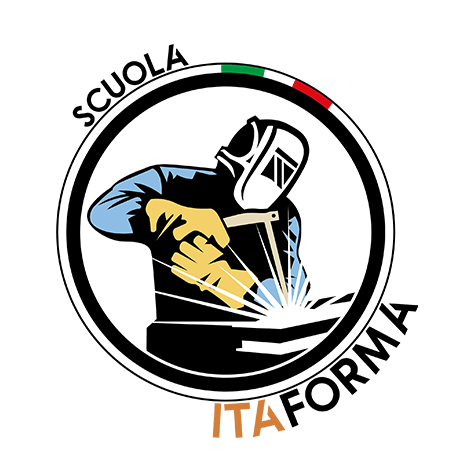Mechanical Industrial Technical Drawing Reading Online Course
Learn Fundamental Skills for the Mechanical Industry.
Learn how to read and interpret mechanical drawings with our comprehensive online course.
he course is designed for those new to technical drawing, providing a solid foundation for becoming a mechanical draughtsman, design technician, or managing production activities. The skills acquired are essential for performing mechanical machining operations on the shop floor and managing the programming of production machines.
Knowing how to read, understand and correctly interpret technical drawings is crucial to working accurately in the production of finished, functioning products. In a company, it is essential to have professionals who can read and translate mechanical drawings prepared by the engineering department.
Introduction Mechanical Industrial Technical Drawing Reading Online Course
What You'll Learn in the Mechanical Drawing Reading Course.
This mechanical drawing reading course will provide you with the skills necessary to read, interpret, and understand technical mechanical drawings used in industries such as manufacturing, automotive, aerospace, and many others.
What does the online Industrial Technical Drawing Reading course include?
- Analysis of detailed mechanical drawings.
- Recognition and interpretation of technical drawing symbols and conventions.
- Reading dimensions and mechanical tolerances.
- Understanding of views and sections used in mechanical drawing.

Who is the course aimed at?
- Technicians and workers in the mechanical industry.
- Mechanical engineers working on complex projects.
- Engineering students and professionals who wish to improve their ability to read and interpret technical drawings.
What is Mechanical Drawing and Why is it Essential for the Industrial Sector?
Technical mechanical drawing is the detailed graphical representation of mechanical components, machines and complex systems. These drawings provide the information needed to manufacture and assemble parts, enabling engineers and technicians to accurately communicate design specifications.
Some of the key aspects of mechanical drawing include:
- Dimensions and Tolerances: Represent the exact dimensions of components and allowable tolerances.
- Materials and finishes: Details on the type of material to be used and the processing required.
- Sections and multiple views: Allow all parts of a mechanical object to be included, even those that are hidden.
Knowing how to read a mechanical drawing is essential to ensure that products are manufactured to the correct specifications, avoiding costly errors during the production process and improving the quality of the final product.

Why Choose Our Online Mechanical Industrial Technical Drawing Reading Course?
Main benefits of our online mechanical drawing reading course:
- Learning flexibility: The course is available 24/7, allowing you to study whenever you want and wherever you are.
- Up-to-date and practical content: Lessons are based on the latest standards in the mechanical industry.
- Manufacturing accuracy: Reduce errors and delays through accurate understanding of technical specifications.
- Improved quality of work: Accurate reading of drawings ensures that every step of the production process is carried out correctly.
- Effective communication: Knowing how to read a mechanical drawing will enable you to better collaborate with design, production, and engineering teams.
- Employability: Having specialized skills such as reading mechanical drawing makes you an ideal candidate for many positions in manufacturing and engineering.
Whether you are looking to advance in your career or to acquire new skills, our course will provide you with the fundamentals and advanced knowledge needed to correctly interpret mechanical drawings.

How is the Online Technical Mechanical Drawing Reading Course structured?
The course is organized into several educational modules that will guide you step by step through all the fundamental aspects of reading mechanical drawing.

Detailed Program
Mechanical Drawing Reading Course
Standards of Technical Drawing: Introduction to the fundamental standards of technical drawing. Exploration of unified sheet formats, scroll, representation scales, and standard units of measurement.
Types of representation: Study of orthogonal and axonometric projections, with emphasis on views and sections. Analysis of detail and assembly drawings, including text, lines and thicknesses used in mechanical engineering drawing.
UNI dimensions and standards: Insight into dimension lines, measurement lines and reference lines. Examination of centers and centerlines, along with the distribution and legibility of dimensions within views. Classification of dimensions according to use.
ISO Tolerances: Overview of geometric and dimensional tolerances according to the ISO system. Study of errors and deviations, with classification of tolerances. Introduction to symbology for surface finish and roughness.
Mechanical couplings: Exploration of types of couplings (with clearance, uncertain and with interference), shaft-to-base and bore-to-base couplings. Techniques for checking tolerated dimensions and measuring using tools such as meter, caliper, micrometer and protractor.
Mechanical connections: Classification and types of mechanical connections. Symbology and representation of welded connections, keys and keys, splined shafts, threaded connections, screws and bolts, pins and shaft-hub shrinkage.
Metallic materials and treatments: Characteristics and properties of metallic materials. Notes on strength testing and introduction to heat treatments.
Practical exercises: Hands-on activities of reading and dimensioning mechanical parts and working drawings to consolidate acquired knowledge.
Contact us
Fill out the form with your details and you will be contacted in a very short time by our School who will provide you with all the information you need.




